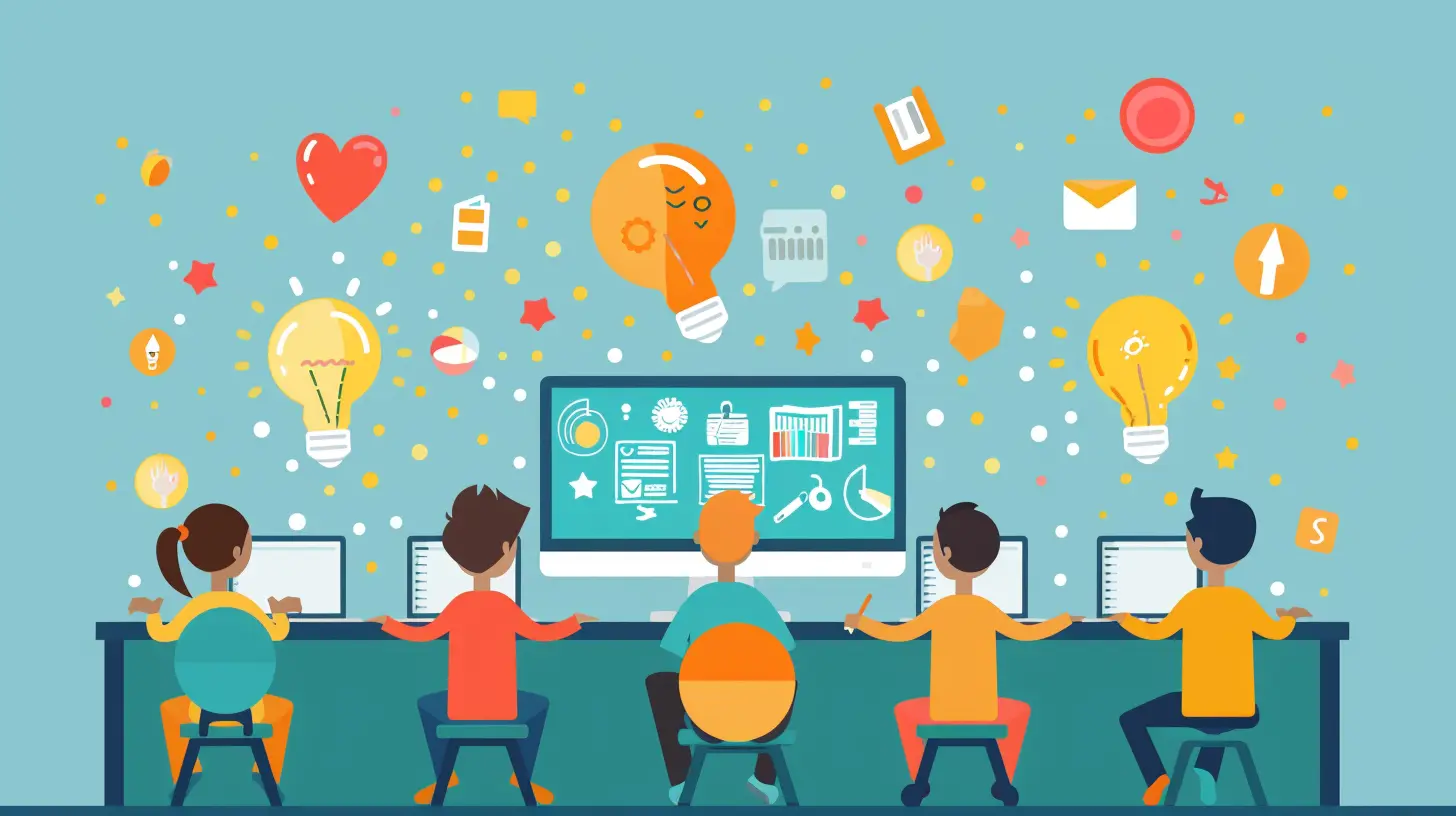How to Help Students with Learning Disabilities Thrive in Remote Learning
4 August 2025
Remote learning has become a significant part of our lives, especially with the rise of technology and the global challenges we've faced in recent years. But let’s be real—learning from home can be tough. Now imagine how challenging it must be for students with learning disabilities. They’re already working harder to keep up in traditional classrooms, and the switch to online learning can seem like climbing a mountain without the right gear.
But fear not! In this article, we’re going to explore how to help students with learning disabilities not just survive but thrive in remote learning environments. Whether you're a teacher, a parent, or a caregiver, there are plenty of strategies you can put in place to make remote learning more accessible and successful for these students. So, let’s dive in!

What Are Learning Disabilities?
Before we get into the nitty-gritty, let’s break down what we mean by "learning disabilities." A learning disability is a neurological disorder that impacts how a person processes information. This can affect various areas, like reading, writing, math, organization, or memory. Some common learning disabilities include:- Dyslexia (difficulty with reading and spelling)
- Dyscalculia (difficulty with math)
- Dysgraphia (difficulty with writing)
- ADHD (issues with focus and attention)
Now, imagine trying to tackle a virtual classroom when you’re already struggling with these challenges. It’s like trying to navigate a maze while blindfolded. But with the right support, students with learning disabilities can still achieve academic success.

Why Remote Learning Poses Unique Challenges
Online learning can be tricky for all students, but for those with learning disabilities, the hurdles can feel even bigger. Here’s why:1. Lack of Face-to-Face Interaction
In a physical classroom, teachers can pick up on non-verbal cues—like when a student looks confused or frustrated. In remote settings, it’s harder for teachers to gauge whether a student is struggling. Plus, students with learning disabilities may find it difficult to ask for help when they can’t physically walk up to the teacher’s desk.2. Reduced Structure and Routine
Many students with learning disabilities thrive on structure and routine. The transition to remote learning often means more freedom, which can be overwhelming. Without the clear boundaries of a school day, some students may struggle to keep up with assignments or stay focused.3. Over-reliance on Reading and Writing
Most online platforms rely heavily on reading and writing—whether it’s reading instructions, taking notes, or completing assignments. For students with dyslexia or dysgraphia, this can be a nightmare. The lack of hands-on activities or oral instruction can leave them feeling lost.4. Distractions at Home
The home environment is full of distractions—pets, siblings, video games, you name it. For students with ADHD or other attention-related issues, staying focused during remote learning can feel like trying to meditate in the middle of a rock concert.
Strategies to Help Students with Learning Disabilities Succeed in Remote Learning
So, what can we do to make remote learning more manageable—and even enjoyable—for students with learning disabilities? Here are some practical strategies that can make a world of difference.1. Create a Structured Learning Environment
Let’s face it: remote learning can feel like the Wild West if there’s no structure in place. Students with learning disabilities often benefit from a clear, predictable routine. Here’s how you can create that:- Set a daily schedule: Make sure students know when they’re expected to log on and complete their work. Break the day into chunks to avoid overwhelming them.
- Use timers: For students with ADHD, using timers or apps like Pomodoro can help them focus for short periods and then take a break.
- Minimize distractions: Find a quiet, dedicated space for learning—away from the TV, toys, and other distractions.
2. Break Tasks into Smaller Steps
Big assignments can feel like climbing Everest. For students with learning disabilities, breaking tasks into smaller, manageable steps can help them feel less overwhelmed.- Chunk the work: Instead of assigning a whole essay right away, break it down into smaller parts—brainstorming, outlining, drafting, and revising.
- Set mini-deadlines: Help students stay on track by setting smaller deadlines for each chunk. This gives them a sense of accomplishment as they complete each step.
3. Provide Visual and Audio Support
Not all students are auditory learners—some need to see information to process it, while others may benefit from hearing it. Luckily, remote learning offers options for both!- Use visual aids: Incorporate visuals like charts, diagrams, and videos to explain concepts. Tools like Google Slides or Canva can be great for this.
- Offer audio options: Give students the option to listen to instructions or assignments through text-to-speech tools. Apps like Natural Reader or Learning Ally offer great support for students with dyslexia.
4. Allow for Flexible Output
Let’s be real—not all students with learning disabilities can express their knowledge through writing, and that’s okay! Give them alternative ways to show what they’ve learned.- Oral presentations: Instead of writing a paper, allow students to explain concepts verbally. They could even record a video or audio file.
- Visual projects: Encourage students to create posters, slideshows, or infographics to demonstrate their understanding of a topic.
- Interactive quizzes: Online tools like Kahoot or Quizlet can turn assessments into fun, interactive games that test knowledge without the stress of long essays.
5. Provide Regular Feedback and Encouragement
When students feel like they’re constantly struggling, it can be easy to lose motivation. That’s why providing regular, positive feedback is crucial.- Frequent check-ins: Schedule regular one-on-one video calls to assess how students are doing. This can help catch any issues before they snowball.
- Celebrate small wins: Be sure to celebrate progress, no matter how small. Even completing a single assignment on time can be a huge victory for some students.
- Offer constructive feedback: Help students understand what they can improve on, but be sure to frame it in a way that builds confidence rather than tearing it down.
6. Leverage Technology Tools
The beauty of remote learning is that we have access to a ton of technology tools that can help students with learning disabilities. Here are a few game-changers:- Speech-to-text software: For students who struggle with writing, tools like Google Docs voice typing or Dragon NaturallySpeaking can make writing assignments a breeze.
- Text-to-speech tools: For students with dyslexia, platforms like Read&Write or Kurzweil Education can convert text into speech, making reading more accessible.
- Organizational apps: Apps like Todoist or Trello can help students with ADHD keep track of assignments and deadlines.
7. Encourage Movement Breaks
Sitting in front of a screen all day can be exhausting, especially for students with ADHD who may struggle to stay still. Encourage movement breaks to help them release energy and refocus.- Scheduled breaks: Incorporate short, scheduled breaks throughout the day. Use them for stretching, walking, or even dancing!
- Brain breaks: Introduce activities that stimulate the brain without requiring intense focus, like puzzles or quick games.

The Role of Parents and Caregivers
Let’s not forget the role parents and caregivers play in remote learning. They are the unsung heroes, especially when it comes to supporting students with learning disabilities. Here’s how they can help:- Communication with teachers: Keep an open line of communication with teachers to ensure students are getting the support they need.
- Monitor progress: Check in regularly to see how students are managing their workload and whether they need additional help.
- Be patient and encouraging: Remote learning can be a bumpy ride, so it’s essential to provide encouragement and understanding along the way. A little patience can go a long way!
Final Thoughts
Remote learning may present unique challenges, but with the right strategies in place, students with learning disabilities can absolutely succeed. It’s all about creating a supportive, structured environment tailored to their needs. By breaking down tasks, using technology, and encouraging flexibility, we can give these students the tools they need to thrive—not just survive—in the world of remote learning.So whether you're a teacher, a parent, or a caregiver, remember this: small changes can make a massive difference. With patience, understanding, and a little creativity, students with learning disabilities can achieve their full potential—even in the digital classroom.
all images in this post were generated using AI tools
Category:
Learning DisabilitiesAuthor:

Bethany Hudson
Discussion
rate this article
1 comments
Phoenix McKinney
In virtual realms, let compassion guide, Crafting spaces where all can confide. With patience and love, watch minds ignite— Together we rise, reaching new heights.
August 22, 2025 at 4:12 AM

Bethany Hudson
Thank you for your thoughtful words! Compassion and understanding are indeed key to creating supportive virtual environments for all learners.


